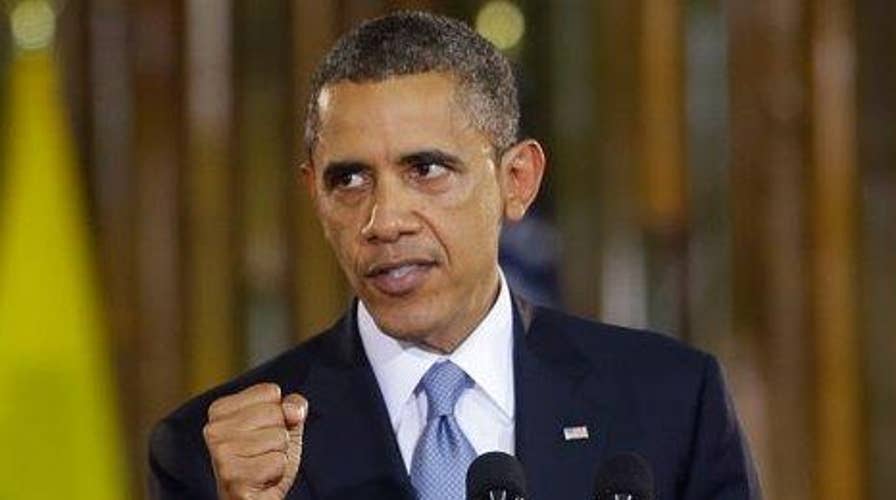Majority of appeals courts now Democratic after Obama tenure
Shannon Bream reports from Washington, D.C.
President Obama may be struggling to tilt the balance of the Supreme Court – but that doesn’t mean he hasn’t already made his mark on the bench.
The president, over the course of his two terms, has appointed hundreds of justices to the lower federal courts, leading to a majority of appeals courts now dominated by Democratic picks. While those nomination battles aren’t nearly as high-profile as they are for the high court, the impact of the appointments is just as pronounced.
“It's often overlooked, but nominees to the lower courts ... are often one of the most important legacies a president leaves behind,” said Elizabeth Wydra, president of the Constitutional Accountability Center.
The Fourth Circuit, which sits just one level below the Supreme Court and is headquartered in Richmond, Va., is a prime example.
Previously viewed as one of the most conservative appellate courts in the country, it has drifted significantly to the left, with Democratic appointees now outnumbering their Republican counterparts two-to-one.
That circuit not only recently struck down North Carolina’s voter ID law, but also ruled in favor of a transgender student seeking to use high school bathroom facilities matching the student’s gender identity rather than biological gender.
The tilt on the federal appeals courts – particularly as the Supreme Court, which takes relatively few cases as it is, remains split 4-4 – is a trend that worries conservatives.
“The Supreme Court takes very few cases, there's not an opportunity to correct every error made -- and when you have activist judges at the lower levels of the federal judiciary, that can have a damaging effect on [the] American system and rule of law,” said Carrie Severino, chief counsel and policy director at the Judicial Crisis Network.
The president has successfully seated a total of 329 federal judges during his two terms – all of them, lifetime appointments.
When Obama took office, only three appellate courts had more Democrat-appointed judges than Republican-appointed judges.
Now, nine of the 13 circuits do.
His pace of federal judicial appointments is in line with his predecessors'. George W. Bush appointed 330, and Bill Clinton appointed 379, according to federal data.
The U.S. Supreme Court hears only 70-80 cases a year, making the lower courts even more important as they handle hundreds of thousands of cases each year, often representing the final word on critical issues.
And it’s not just the cases they decide. It’s how they decide them, crafting the framework for how legal disputes will be handled going forward.
“President Obama's nominees to the Supreme Court, in particular, will be a legacy for him not just because they may cast more liberal votes than justices a conservative president would've put on, but also because of the way they talk about the law and the Constitution,” Wydra said.
Obama also worked to remake the D.C. Circuit, by forcing through three nominees, with the help of then-Senate Majority Leader Harry Reid, who changed the rules of the Senate in order to make that happen.
One of the key issues the D.C. Circuit considers is the use of executive power.
Meanwhile, Obama’s nominee to fill the Supreme Court vacancy, Merrick Garland, remains stalled in the Senate. However, Republican Sen. Chuck Grassley, who chairs the Senate Judiciary Committee, said Monday that if Hillary Clinton wins the November election, it’s possible the Senate could actually move on Garland’s nomination –- if a “large number” of senators pressed Grassley to do so.





